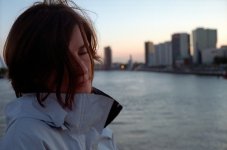Jamie123
Veteran
I have a portrait photo I scanned that was a little underexposed. I can bump up the exposure until the skin tones look good but then there's horrible noise in the dark areas of the photo. Is there a way to avoid this??
By the way, I use an Epson 4990 scanner and the film is Portra 160VC 120 film.
Any kind of help would be greatly appreciated!
By the way, I use an Epson 4990 scanner and the film is Portra 160VC 120 film.
Any kind of help would be greatly appreciated!


